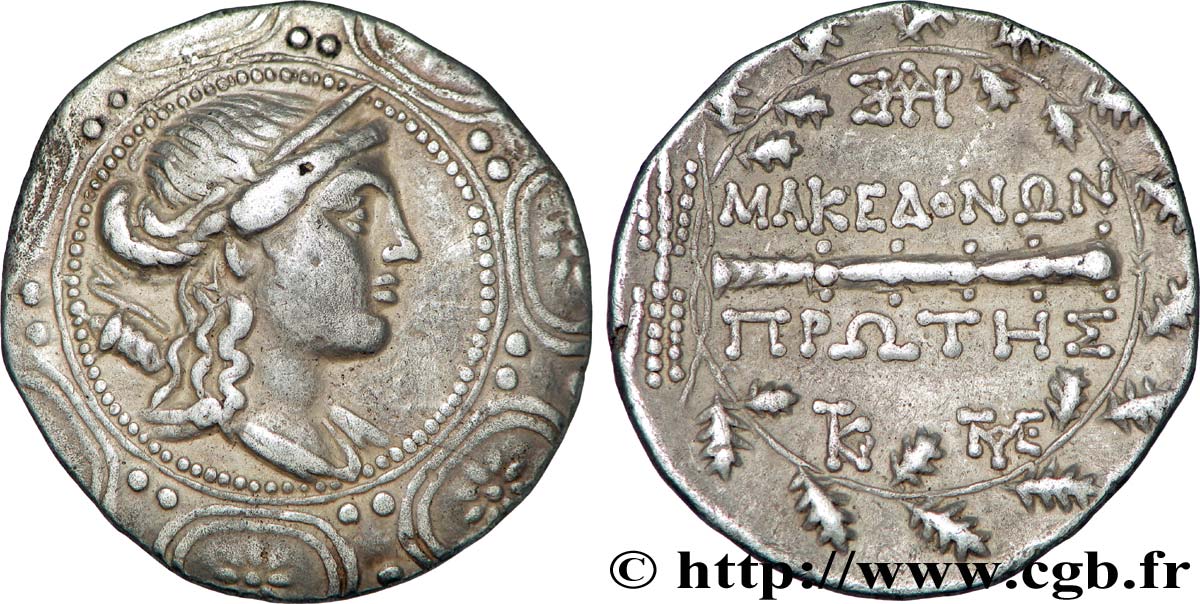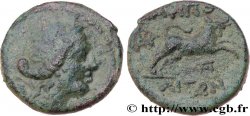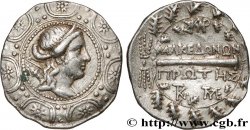E-auction 55-24344 - bgr_303893 - MACEDONIA - AMPHIPOLIS Tétradrachme stéphanophore
You must signin and be an approved bidder to bid, LOGIN TO BID. Accounts are subject to approval and the approval process takes place within 48 hours. Do not wait until the day a sale closes to register. Clicking on « bid » constitutes acceptance of the terms of use of cgb.fr private e-auctions.
Bids must be placed in whole Euro amounts only. The sale will start closing at the time stated on the item description; any bids received at the site after the closing time will not be executed. Transmission times may vary and bids could be rejected if you wait until the last second. For further information ckeck the E-auctions F.A.Q.
NO BUYER'S FEE.
NO BUYER'S FEE.
| Estimate : | 450 € |
| Price : | 260 € |
| Maximum bid : | 300 € |
| End of the sale : | 05 May 2014 15:02:30 |
| bidders : | 15 bidders |
Type : Tétradrachme stéphanophore
Date: c. 150 AC.
Mint name / Town : Amphipolis, Macédoine
Metal : silver
Diameter : 31,5 mm
Orientation dies : 12 h.
Weight : 16,45 g.
Coments on the condition:
Exemplaire sur un flan ovale, très large, bien centré des deux côtés. Beau portrait d’Artémis Tauropolos. Bien venu au revers, avec une massue un peu grêle. Très belle patine de collection ancienne gris foncé avec des reflets dorés
Catalogue references :
Obverse
Obverse legend : ANÉPIGRAPHE.
Obverse description : Buste diadémé et drapé d'Artémis Tauropolos à droite, l'arc et le carquois sur l'épaule, placé au centre d'un bouclier macédonien orné d'étoiles.
Reverse
Reverse description : Légende de chaque côté d'une massue ; au-dessus, un monogramme.
Reverse legend : MAKEDONWN // PROTHS// (SAUHR)/ (TKr)/ (ToME)
Reverse translation : (Macédoine première).
Commentary
Les auteurs de l’AMNG avaient recensé cinquante-quatre exemplaires pour cette variété. Au droit, sur le bouclier macédonien, le buste d’Artémis est entouré d’une combinaison luni-solaire associant croissant de lune et astre solaire.








 Report a mistake
Report a mistake Print the page
Print the page Share my selection
Share my selection Ask a question
Ask a question Consign / sell
Consign / sell
 Full data
Full data









